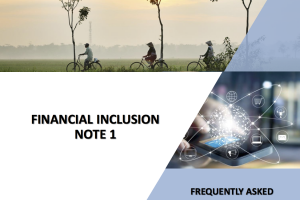DATABOOK
This post is also available in: Tiếng Việt (Vietnamese)
OVERVIEW
In order to improve information transparency, Vietnam Microfinance Working Group (VMFWG) has cooperated with the MIX to gather Vietnamese MFIs data over the past 7 years. This is the seventh consecutive year that we publish the book “Microfinance Institutions in Vietnam” to provide an overall picture on the microfinance sector in Vietnam with data collected. The booklet has received numerous positive comments from Central Government Agencies, investors, analysts, and MFIs who provided data. This year, we collect and present more complete and comprehensive data to readers, including a new set of information from MFIs for better understanding, such as social indicators and peer group analysis. This will encourage MFIs to drive their business by comparing their performance to other MFIs in both domestic and international.
There are a total of 30 MFIs have participated in the 2018 data collections. VMFWG also encountered many difficulties from the lack of connection and communication, and from differences in management and reporting systems when asking microfinance programs/projects for data.

TARGETS
“Microfinance institutions in Vietnam’’ book meet policy advocacy for Microfinance activities in Vietnam target, especially in the process of legal framework accomplishment by providing MFIs’ data and information to policymakers. In addition, it supports MFIs to do research and compare and analyze their development compared to other MFIs in Vietnam and in EAP area. Furthermore, it supports capital connecting by providing information of MFIs to Donors, domestic and international investors via International Microfinance networks. It also helps to increase transparency and responsible finance in Microfinance activities via public information in website and international microfinance network (e.g.: The MIX: http://www.mixmarket.org/).
However, certain limitations in the 2018 Databook need to be considered in the final analysis since Vietnamese MFIs have different levels of understanding of financial analysis, accounting and delinquency management. This makes us fail to publish information on Portfolio at Risk for the sake of data consistency, as only a few members are following international standard practices in the way they report overdue loans in financial reports. Self-Sufficiency (FSS) could not be calculated, as the great majority of Vietnamese MFIs could not report sufficient information to proceed with the adjustments on financial data.
Moreover, Member profiles are formed with information from 30 microfinance institutions (including member and non-member institutions of VMFWG) among hundreds of microfinance Programs/Projects in Vietnam. To make matter worse, any MFIs that did not provide data in 2017 prohibit certain calculation of averages for a set of ratios [1].
In addition, MFI information sharing relies mostly on their commitment and willingness to cooperate. Therefore, it creates great influences on the ability to aggregate data in a complete and overall way on Vietnam microfinance issue that we want to fix for the next member profile. Furthermore, data of peer groups in East Asia and the Pacific areas are also not adequate, leading to incomplete comparison figures and analysis.
We hope that, in spite of these limitations, our effort in collecting data and this report will encourage and enable our member organizations and other stakeholders to discuss and compare the performance of Vietnamese MFIs nationally and with their Asian and International Peers.
PROFILES AND BENCHMARKS METHODOLOGY AND PEER GROUPS [2]
These tables are designed to present performance benchmarks from which managers and directors of microfinance institutions can compare their institution’s performance with that of similar MFIs. Since the microfinance industry consists of a range of institutions and operating environments – some with very different characteristics – an MFI should be compared to similar institutions (peer groups) to display the usefulness of comparisons.
Peer groups are sets of programs that have similar characteristics – similar enough for readers to find it relevant to compare their results with those of other organizations. The benchmark tables present simple peer groups that look at MFIs based on a single characteristic. This allows users to analyze performance based on a common factor, such as age, location or scale of operations.
[1] See the glossary for details about ratio calculations
[2] Adapted from the MIX market





